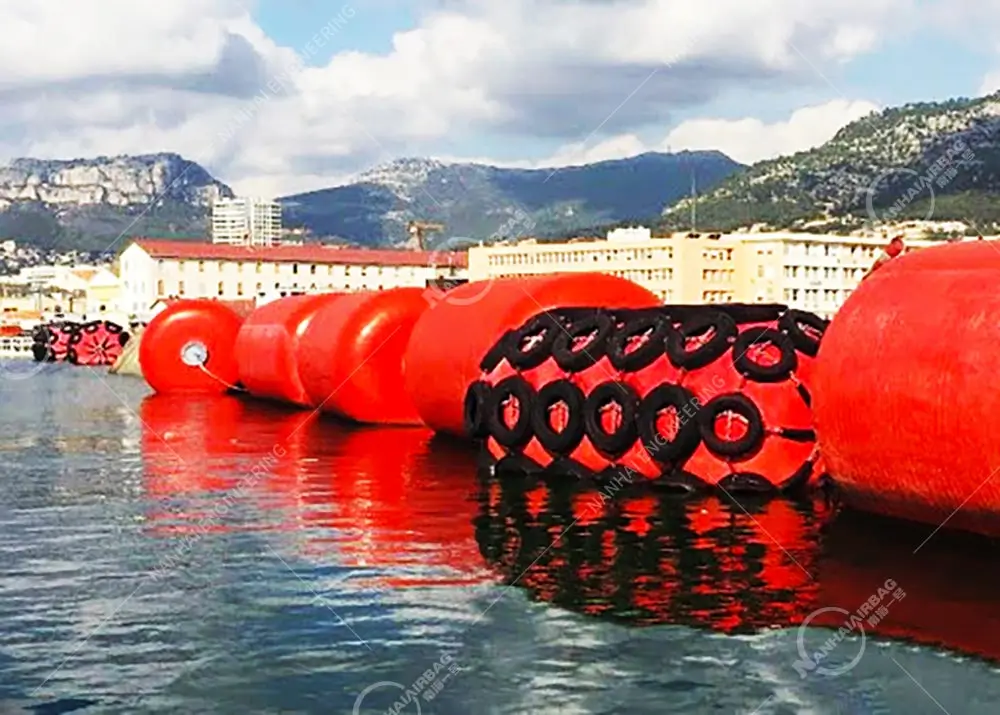The Science of Cone Fenders: Compression, Deflection & Shear
06/27/2025The Structure and Material of Arch Rubber Fenders Explained
06/30/2025Smart Foam Fenders: Port Protection’s Future
The smooth operation of global trade relies heavily on safe and efficient ports and vessels. Every day, colossal cargo ships, bustling ferries, and specialized offshore vessels navigate tight spaces. They battle unpredictable currents and challenging weather. One miscalculation or a strong gust of wind can lead to millions of dollars in damage to infrastructure and cargo, not to mention environmental risks and costly downtime.

The Urgent Need for Smarter Foam Fenders
This isn’t just about avoiding a dent or a scratch anymore. Ships are getting bigger, ports are busier, and the sheer volume of goods moving worldwide means the stakes are higher than ever. Traditional fenders, while serving their purpose for decades, often react after an impact has occurred. They absorb the force only after the collision occurs. We urgently need something smarter—something that can anticipate, adapt, and provide a new level of protection. This critical need for advanced solutions is precisely why smart foam fenders are rapidly becoming the future trend in maritime safety. They’re not just a better bumper; they represent a significant leap forward in safeguarding our vital waterways.
What Makes Foam Fenders “Smart”?
Smart marine fenders are traditional foam bumpers enhanced with IoT (Internet of Things) sensors. These sensors monitor impact forces, deflection, and wear in real-time. This crucial data enables predictive maintenance, enhances berth efficiency, extends fender lifespan, and significantly improves safety at smart ports. Consequently, they transform fenders from passive buffers into active, data-gathering assets.
Why Smart Foam Fenders are a Game Changer
So, what exactly makes these “smart” foam fenders so special? It’s all about shifting from a reactive approach to a proactive one.
Unmatched Energy Absorption and Durability
At their core, foam fenders already excel. Made with closed-cell foam, they are unsinkable and highly resistant to punctures, unlike pneumatic counterparts that rely on air pressure. This means even if the outer skin experiences damage, the fender continues to perform. Smart foam fenders build on this foundation by offering consistent energy absorption with low reaction forces, thus protecting both the vessel and the port structure from excessive stress. Furthermore, manufacturers design them to withstand harsh marine environments, from extreme temperatures to UV radiation and chemicals.
Real-time Monitoring and Predictive Maintenance
Here’s where the “smart” truly comes in. Imagine a fender that alerts you it’s wearing out before it fails. Embedded sensors in smart foam fenders collect crucial data like impact force, deflection, temperature, and even usage frequency. Port operators then receive this information, allowing them to:
- Schedule maintenance proactively: Instead of waiting for a fender to show visible damage, ports can replace or repair them during low-traffic periods, avoiding costly disruptions.
- Optimize berth allocation: By understanding the actual forces exerted on fenders, ports can better assign berths to different vessel types, ensuring optimal protection and efficiency.
- Extend fender lifespan: Real-time data helps prevent misuse and over-compression, maximizing the lifespan of these valuable assets and reducing replacement frequency.
Enhanced Safety and Operational Efficiency
Early warnings about unusual impact patterns or material fatigue directly translate into improved safety. Port operators can intervene before incidents occur, minimizing the risk of vessel damage, structural harm, and potential environmental spills. Additionally, this data-driven approach streamlines operations, leading to faster docking procedures and quicker turnaround times for vessels.
Environmental Benefits
By extending the lifespan of fenders and reducing the need for frequent replacements, smart foam fenders contribute to a more sustainable maritime industry. Less manufacturing, less waste, and fewer resources consumed – ultimately, this all adds up to a greener footprint for ports worldwide.
What’s Next for Port Protection?
The integration of smart technologies is fundamentally transforming port operations. Smart foam fenders represent just one piece of a larger puzzle that includes AI-driven analytics, autonomous systems, and advanced connectivity. The future of port and vessel protection isn’t just about getting bigger or stronger; it’s about becoming smarter, more interconnected, and ultimately, more resilient. We are moving towards a future where every piece of port infrastructure works together, collecting and sharing data to ensure the safest, most efficient, and most sustainable maritime trade possible.
FAQ
What is the core difference between traditional foam fenders and smart foam fenders?
Traditional foam fenders are passive physical buffers. Smart foam fenders integrate sensors that collect real-time data on impacts and wear, enabling proactive maintenance and optimized operations.
How do smart foam fenders collect data, and what kind of data do they provide?
They use embedded sensors (like accelerometers and strain gauges) to gather data on impact force, deflection, frequency of use, and temperature. This data is then wirelessly transmitted for analysis.
Are smart foam fenders more expensive than traditional fenders, and what is their ROI?
Yes, they typically have a higher upfront cost. However, their ROI is significant because they reduce maintenance needs, extend lifespan, enhance safety by preventing costly damage, and improve overall port efficiency.
Can smart foam fenders withstand extreme weather conditions?
Absolutely. Manufacturers design them for harsh marine environments. Their durable foam core and reinforced outer skin resist UV, abrasion, chemicals, and extreme temperatures, ensuring reliable performance in diverse conditions.
What is the typical lifespan and maintenance requirement for smart foam fenders?
Their lifespan commonly ranges from 10 to 20+ years, often extended by their smart capabilities. Maintenance primarily involves visual inspections and continuous data monitoring to facilitate proactive repairs, significantly reducing unexpected downtime.
